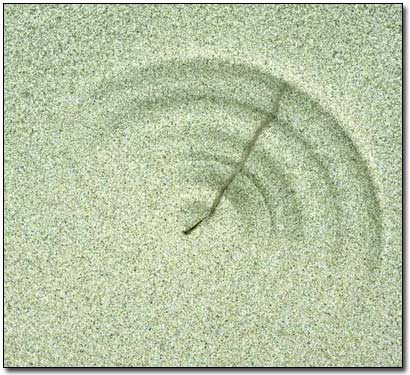|
Often our approach to photographing a subject is to capture it on impulse. This
strategy can result in excellent photographs. However, after capturing the moment,
this strategy often leads to a photographer wondering what's next. One alternative
is to study an area for awhile in order to become familiar with the environment and
its affect on the subject. This is an excellent way to capture a feeling and also
witness how subjects change under different lighting and atmospheric conditions.
However, this approach takes time which many of us do not have if we are not
pursuing photography as a full time profession. What often happens next is that we
as photographers fall into the creative slump. I have come to realize after
actively pursuing photography for thirty years that the opportunities nature offers
 are without limit, the creative works seen in all areas of the Outdoor Eyes Website are
testimony to this fact. Personally, I have concluded that it is usually my
approach to the environment and subject matter within the environment that causes
the creative malaise.
are without limit, the creative works seen in all areas of the Outdoor Eyes Website are
testimony to this fact. Personally, I have concluded that it is usually my
approach to the environment and subject matter within the environment that causes
the creative malaise.
One relatively unproductive day while photographing at Sandy Hook National
Recreation Area and being stuck in a photographic rut, I noticed how the reeds would
blow in the wind and create designs in the sand and it occurred to me that nature is
really the artist here, using a combination of light, wind and texture (i.e., sand
as a canvas) to create a work of art. From that time on whenever I visited Sandy
Hook I questioned what nature was trying to do with its artistic tools. I soon
discovered that my photographic trips to this area were much more productive when I
observed the environment with this approach. Let me be clear, I am not dismissing
the value of impulse or the study of an area as approaches that can lead to
wonderful photos. I am suggesting that, at least in my case, viewing an area by
asking how the tools of nature were used to create an interesting subject has
resulted in more usable images per trip than just going to a location and observing.
As an additional bonus I soon realized that many subjects can be approached from
this viewpoint with slight modifications based upon the existing environment. For
example, when photographing structures it helps to consider when it was built, who
built it, the technology and social climate at the time of construction and any
other items that contributed to its creation. I have also come to realize that a
photographic trip to an area can be even more productive if this approach is
combined with the study of an area over time to achieve an even higher production of
successful images when compared to using each of these approaches independently.
I'm not sure how much everyone else's creative mind is like mine but I hope that you
at least try this approach and see if you are surprised at the results.
| 
